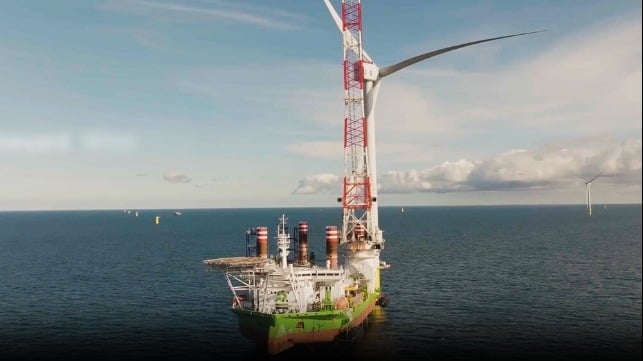Suspension Lifted at Vineyard Wind with New Plan Calling for Blade Removal

A revised Construction and Operations Plan has been approved for the troubled U.S. offshore wind farm known as Vineyard Wind approximately six months after one of its turbine blades fractured. In one of its final acts, the Biden administration’s Bureau of Ocean Energy Management and Bureau of Safety and Environmental Enforcement completed the review and approved the revised plan on January 17, including lifting the suspension orders in place for the project.
A spokesperson for Vineyard Wind confirmed to the local media in Massachusetts that a single turbine has been placed back into operation to generate power. It emphasized that safety remains the top concern while the plan addresses the blades and moving forward with the work. Previously, the company had been approved to proceed with the installation of the jackets for the monopole foundations.
The new plan cites the root cause analysis completed by GE Vernova for the July 13 failure of one of the blades. It found that there was insufficient bonding at certain locations within the blade, which should have been detected at the manufacturing plant. Reprocessing of manufacturing data reports that additional blades with insufficient bonding were identified.
GE Vernova reached a decision and it is being directed by BSE that all the blades manufactured at GE Vernova’s plan Gaspe, Canada plan be removed. This will be at up to 22 locations and pending further review by BSE potentially two additional locations with blades from other manufacturing plants. In June 2024, Vineyard Wind highlighted that it had completed the installation of blades at 21 turbines and was completing a 22nd site shortly before the failure. Blades have already been removed at two of the 22 sites. The plan calls for a total of 62 turbines. When the wind farm off Massachusetts is completed.
Vineyard Wind reports that the jack-up vessel Sea Installer, which has already been employed in the wind development area, will be working on the removal. They presented alternatives including using a second unnamed vessel to speed the removal and installation of new blades. It is estimated it could take up to seven months to remove all the blades.
The new plan calls for installing blades from the GE Vernova manufacturing plant in Cherbourg, France. Vineyard Wind will have to demonstrate that the French blades meet the original design specs. Inspections of the manufacturing process are required along with drone or rope external inspections within six months of installation.
Friday’s approval and lifting of the suspension cleared the path for the wind farm which had been billed as the U.S.’s largest operating offshore wind farm. The bureaus took these steps on the last working day of the Biden administration along with approval of the construction plan for another Vineyard wind plan.
With the change in administrations on January 20, the future of wind energy development is in doubt. Among a long list of “priorities” released by the White House shortly after the inaugural, it lists, “President Trump’s energy policies will end leasing to massive wind farms that degrade our natural landscapes and fail to serve American energy consumers.” Reports last week said the new administration would impose a moratorium for further review of offshore wind energy installations and issues ranging from whale deaths to the need for government subsidies. President Donald Trump has vowed not to build new “windmills” during his second administration.
